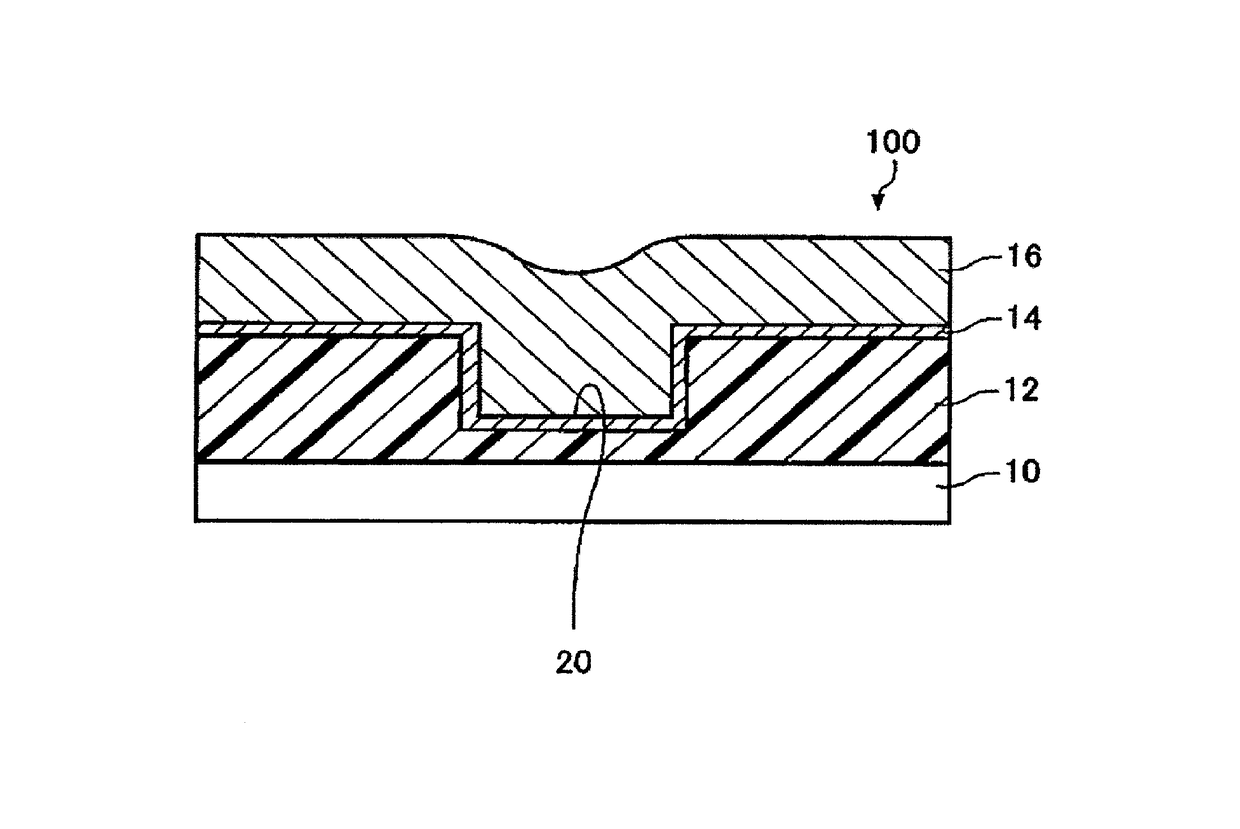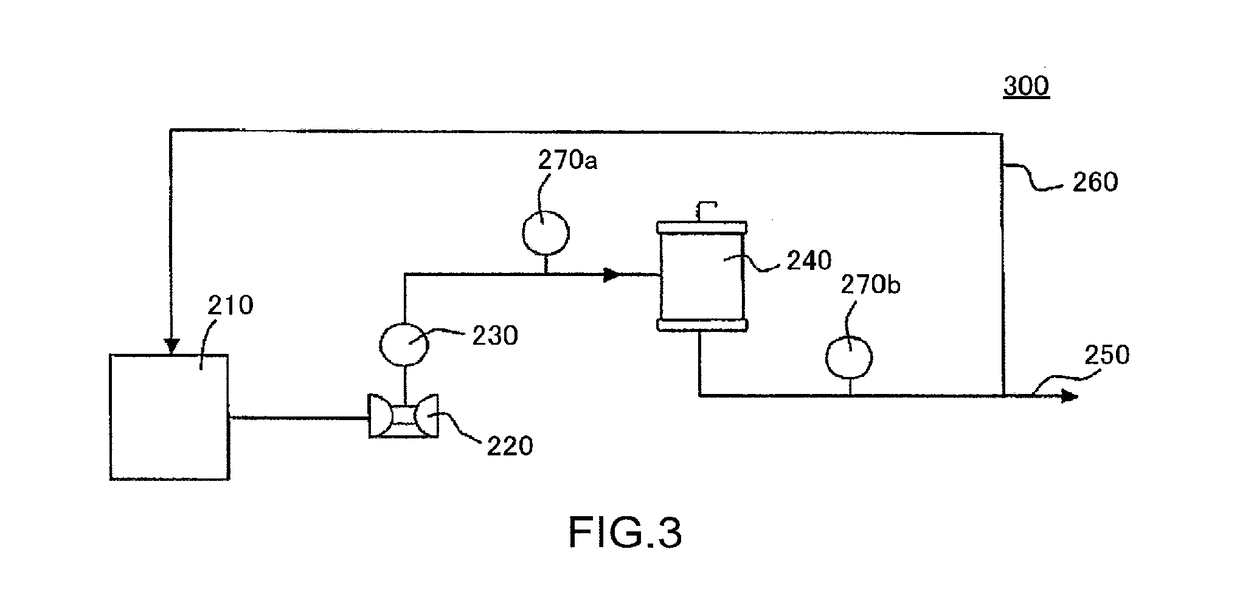Semiconductor treatment composition and treatment method
a technology of semiconductors and compositions, applied in the direction of lapping machines, aqueous dispersions, polishing compositions, etc., can solve the problems of affecting the performance the surface of the polishing machine is easily contaminated with iron, and the device may fail to work properly, so as to reduce the damage applied, effectively remove the surface of the processing target, and effectively remove the polishing waste
- Summary
- Abstract
- Description
- Claims
- Application Information
AI Technical Summary
Benefits of technology
Problems solved by technology
Method used
Image
Examples
example 1
4.1. Example 1
4.1.1. Preparation of Semiconductor Treatment Composition (Concentrated-Type Semiconductor Treatment Composition)
[0102]A polyethylene container was charged with each component listed in Table 1 in the ratio listed in Table 1. After the addition of a proper quantity of ion-exchanged water, the mixture was stirred for 15 minutes. Ion-exchanged water, potassium hydroxide, and sodium hydroxide were optionally added to the mixture so that the total amount of the components was 100 parts by mass to prepare a composition having the pH, the K content, and the Na content listed in Table 1.
[0103]After the addition of 0.01 parts by mass of colloidal silica (“PL-1” manufactured by Fuso Chemical Co., Ltd., primary particle size: 15 nm) to 100 parts by mass of the composition, the mixture was filtered using the filtration device 300 illustrated in FIG. 3 (filtration step). The filtration device 300 illustrated in FIG. 3 includes a supply tank 210 that stores and supplies the composi...
example 27
4.3. Example 27
4.3.1. Preparation of Semiconductor Treatment Composition
[0145]A semiconductor treatment composition (concentrated-type semiconductor treatment composition) was prepared in the same manner as in Example 1, except that the composition was changed as listed in Table 3, and the pH, the K content, and the Na content were adjusted as listed in Table 3 using potassium hydroxide and sodium hydroxide, as required.
4.3.2. Wiring Board Cleaning Test
(1) Chemical Mechanical Polishing Step
[0146]A substrate provided with a copper wire pattern (i.e., a test substrate obtained by stacking a PETEOS film on an 8-inch silicon substrate to a thickness of 5,000 angstroms, forming a pattern using a mask (“SEMATECH 854”), and sequentially stacking a cobalt film (thickness: 250 angstroms), a tungsten seed film (thickness: 1,000 angstroms), and a tungsten-plated film (thickness: 10,000 angstroms) thereon) was subjected to single-step chemical mechanical polishing under the following conditions...
examples 28 to 31
4.4. Examples 28 to 31 and Comparative Example 10
[0172]A semiconductor treatment composition (concentrated-type semiconductor treatment composition) was prepared in the same manner as in Example 27, except that the composition was changed as listed in Table 3, and a treatment agent (cleaning agent) was prepared in the same manner as in Example 27, except that the composition was changed as listed in Table 3. The wiring board treatment test and the evaluation tests were performed in the same manner as in Example 27.
4.5. Examples 32 to 35 and Comparative Examples 11 to 13
[0173]A polyethylene container was charged with each component listed in Table 4 in the ratio listed in Table 4, and the mixture was stirred for 15 minutes.
[0174]The resulting composition was filtered in the same manner as in Example 1, except that a filter in which a membrane-type cartridge filter “PE-CLEAN” (manufactured by Pall Corporation, nominal filtration rating: 0.05 micrometers, length: 10 inches) was provide...
PUM
| Property | Measurement | Unit |
|---|---|---|
| particle size | aaaaa | aaaaa |
| viscosity | aaaaa | aaaaa |
| particle size | aaaaa | aaaaa |
Abstract
Description
Claims
Application Information
 Login to View More
Login to View More - R&D
- Intellectual Property
- Life Sciences
- Materials
- Tech Scout
- Unparalleled Data Quality
- Higher Quality Content
- 60% Fewer Hallucinations
Browse by: Latest US Patents, China's latest patents, Technical Efficacy Thesaurus, Application Domain, Technology Topic, Popular Technical Reports.
© 2025 PatSnap. All rights reserved.Legal|Privacy policy|Modern Slavery Act Transparency Statement|Sitemap|About US| Contact US: help@patsnap.com



